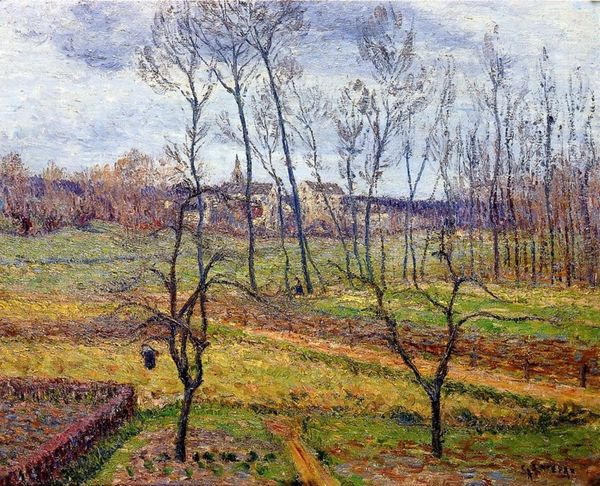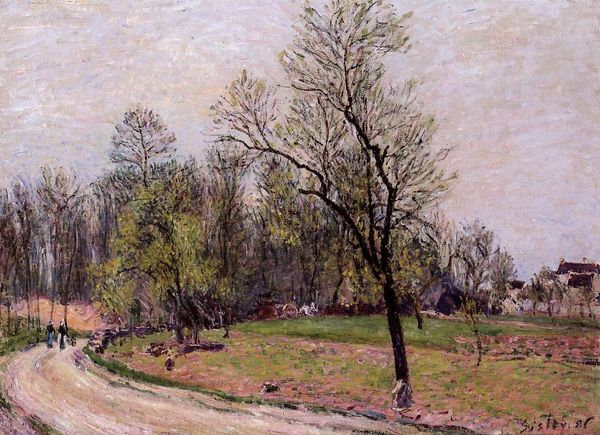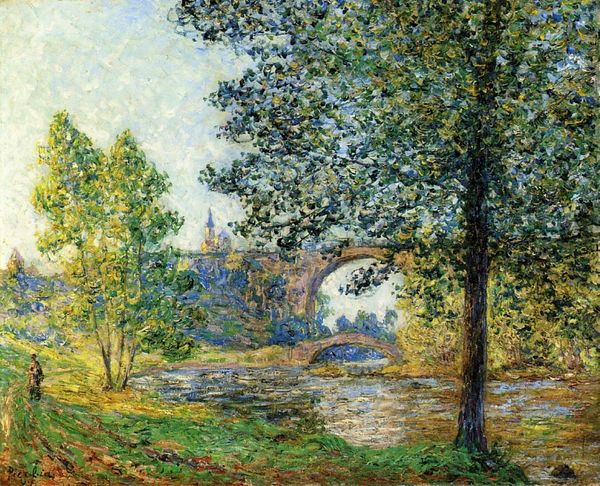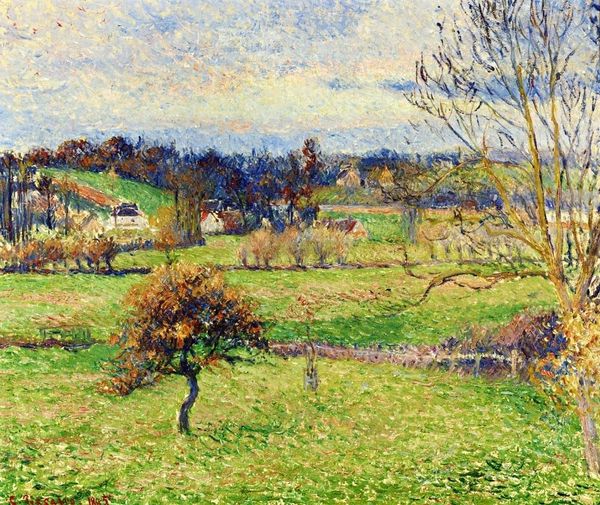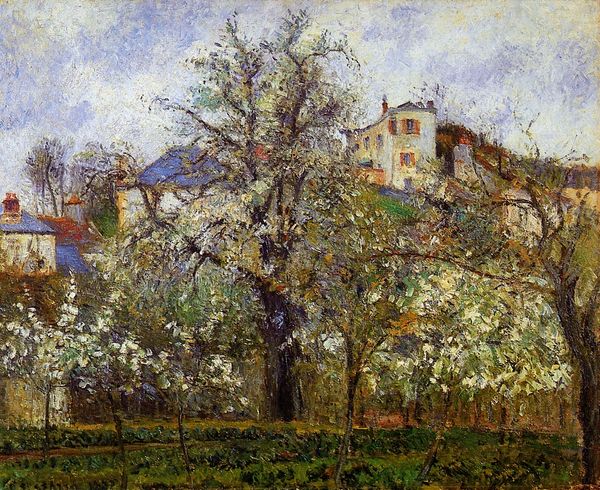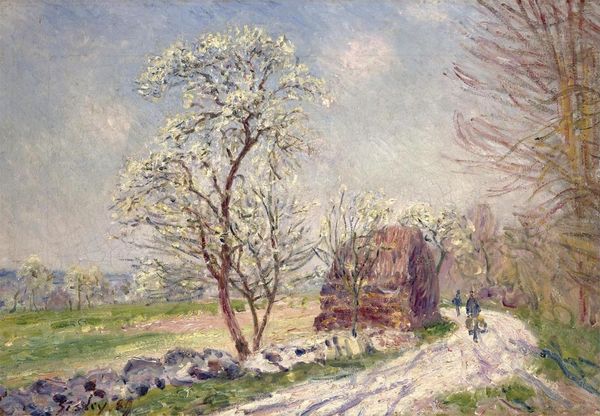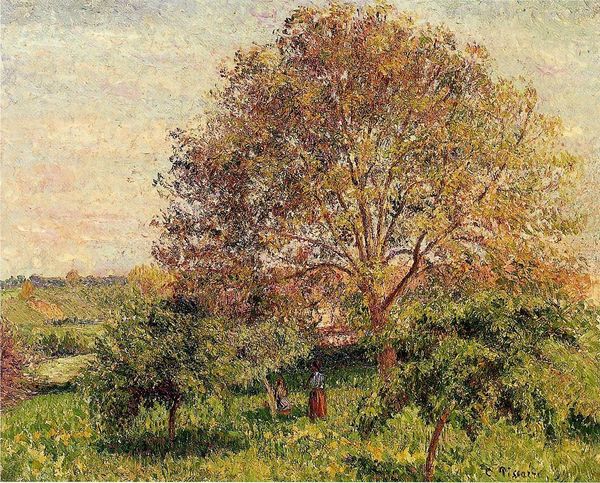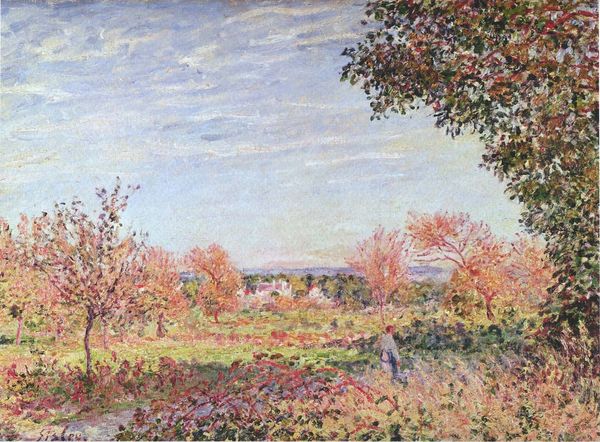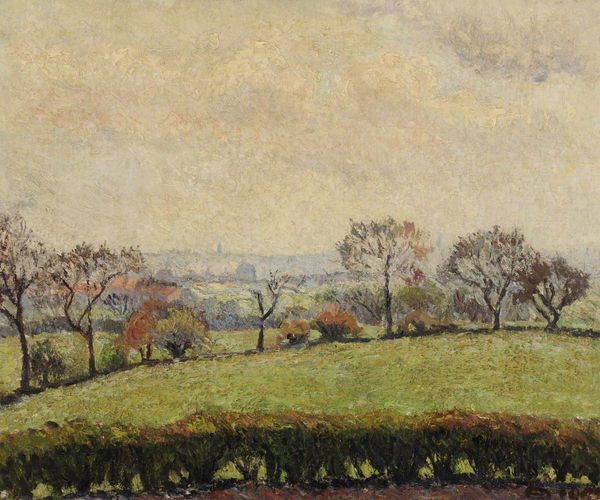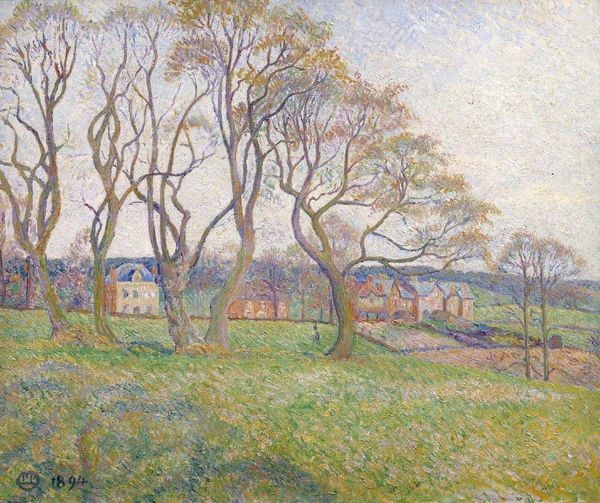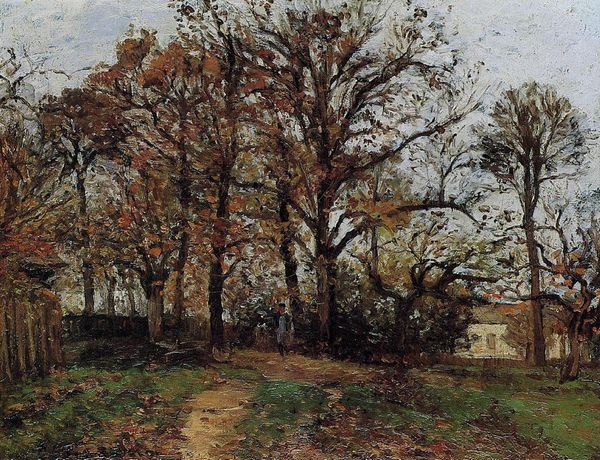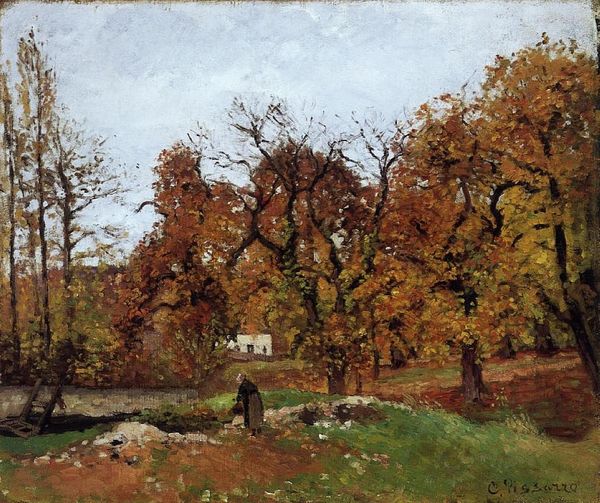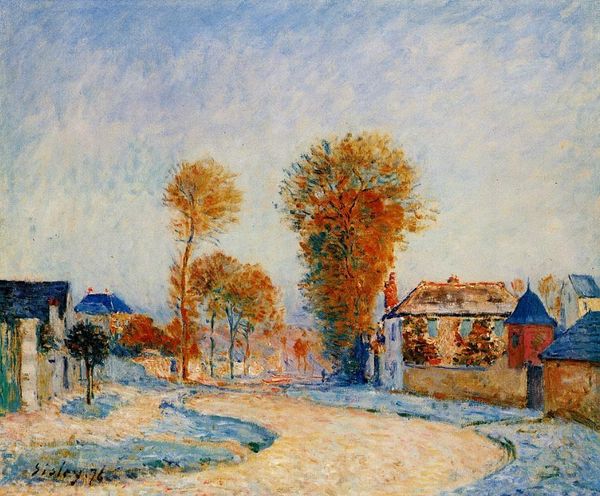
painting, plein-air, oil-paint
#
painting
#
impressionism
#
plein-air
#
oil-paint
#
landscape
#
impressionist landscape
#
oil painting
#
cityscape
Dimensions: 18.5 x 22 cm
Copyright: Public domain
Curator: Before us hangs Camille Pissarro’s oil painting, “On Orchard in Pontoise in Winter,” painted in 1877. The piece is held in a private collection, and showcases his brilliant impressionistic technique. What strikes you initially? Editor: Well, I’m immediately drawn to the somber mood. There's a stillness and quiet desolation that really resonates. The bare branches reach out like skeletal fingers, a potent symbol, almost a visual metaphor for… vulnerability, wouldn't you agree? Curator: Yes, I see that, and I think Pissarro was really capturing a pivotal moment in the representation of the rural working class. In 1877, Pontoise was a community undergoing enormous social upheaval and industrialization. He was actually documenting a world on the precipice of irrevocable transformation, as those in rural districts of France faced proletarianization during the rise of industrial centers. Editor: Exactly! This aligns with post-Marxist art history, in which landscape painting can no longer be viewed as divorced from historical context and from real, living experience of labor. There's such a contrast within Pissarro's landscapes: his sensitivity for social commentary within the delicate aesthetics that Impressionism afforded. But to move back to our reading of vulnerability, the figures in the background, rendered with broad brushstrokes, suggest a certain anonymity too, wouldn’t you say? Curator: I concur. Those figures, those indistinct members of the working-class of Pontoise, become almost Everyman, Everywoman. Pissarro gives their experiences this sense of universality. Note how, with a series of layered brushstrokes, he makes you question: whose experiences have been valued as sources of art, and whose haven’t? Pissarro would have been engaging with radical thoughts around how hierarchies around work shape our aesthetics. Editor: Absolutely. I also observe how the institutional art world often dismissed Impressionists for painting modern, everyday life rather than mythological or historical scenes. Looking back, we can certainly reappraise their subjects. Curator: Absolutely. Understanding the environment and socio-economic underpinnings of Impressionism allows us a fresh approach to evaluating paintings like this one, and re-evaluate those once perceived hierarchies. Editor: Ultimately, a piece like this provides us a historical, and aesthetic, space to confront contemporary anxieties of capitalism and industrial progress, both today and in 1877.
Comments
No comments
Be the first to comment and join the conversation on the ultimate creative platform.
